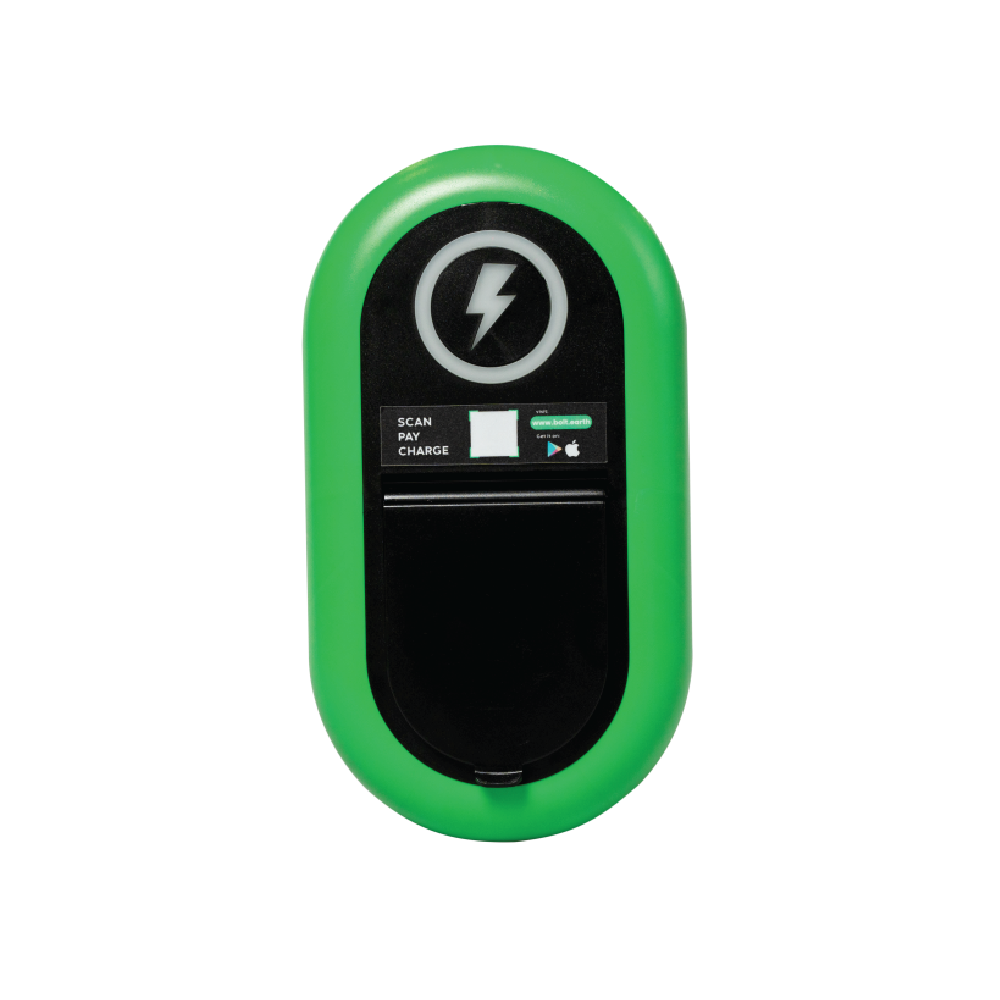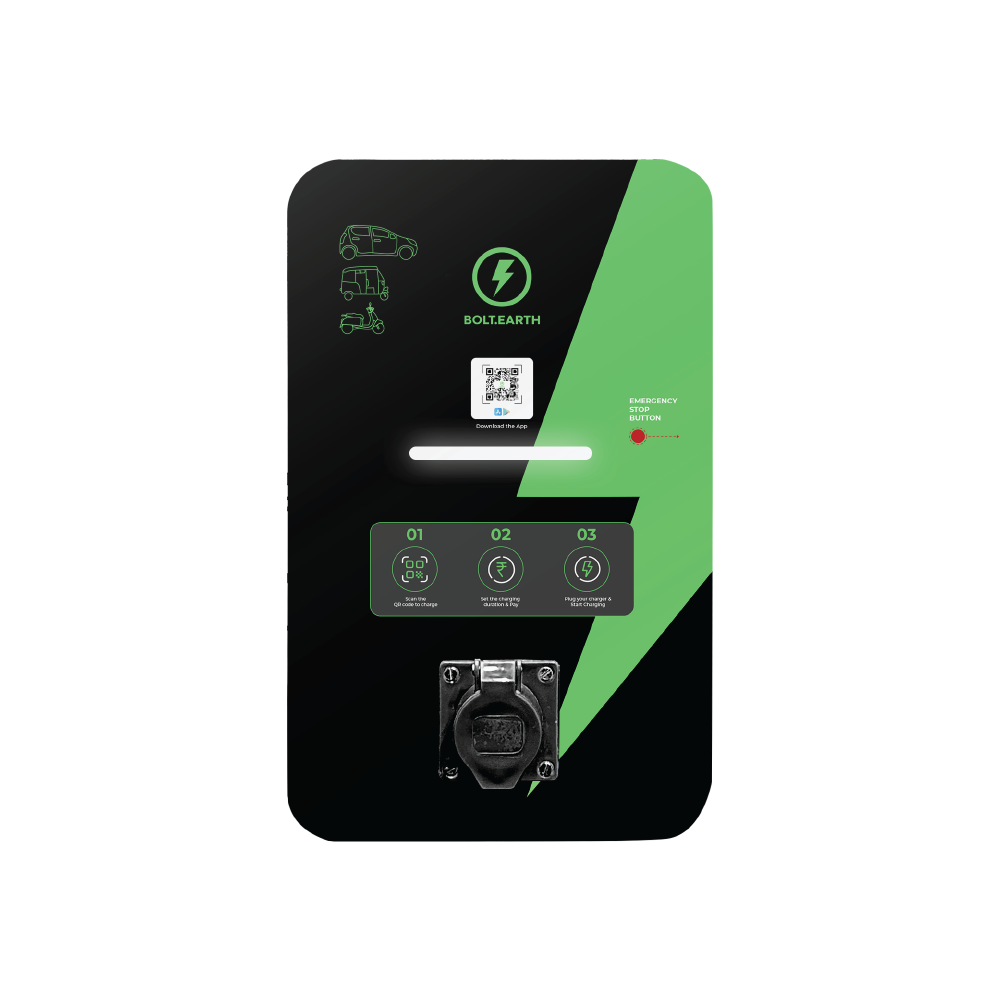Government Incentives for EV Charging Infrastructure in India
Raghav Bharadwaj
Chief Executive Officer
Published on:
12 Aug, 2025
Updated on:
13 Oct, 2025

Electric vehicles (EVs) are gaining momentum in India’s transition to sustainable transport. However, widespread adoption hinges on a robust charging network across the country. Recognizing this, the Indian government, at both central and state levels, has rolled out an array of incentives to accelerate EV charging infrastructure development.
From capital subsidies and tax breaks to land allotments and utility support, these measures aim to alleviate “range anxiety” and encourage investments in charging stations. This push supports ambitious goals: India is targeting 30% EV penetration by 2030 in new vehicle sales, a goal that requires a nationwide charging network.
Whether you’re a charge point operator, fleet operator, startup founder, or EV investor, this blog breaks down the evolving policy landscape and shows you how to make the most of government support.
- Because in this guide, we answer three critical questions:
- What are the central government incentives for EV charging infrastructure in India?
- Which Indian states offer the best subsidies and benefits for setting up EV charging stations?
- How can charge point operators, investors, and developers benefit from these incentives today?
Central Government Initiatives for EV Charging Infrastructure
From FAME to E-DRIVE: Laying the Groundwork
India’s EV push began with the National Electric Mobility Mission Plan 2020, under which the FAME India (Faster Adoption and Manufacturing of (Hybrid &) Electric Vehicles) schemes were launched. FAME I ran from 2015 to 2019, supported 2.55 lakh EVs, and sanctioned 520 EV charging stations with an outlay of ₹43 crore. Though a pilot,it set the stage for a larger intervention under FAME II.
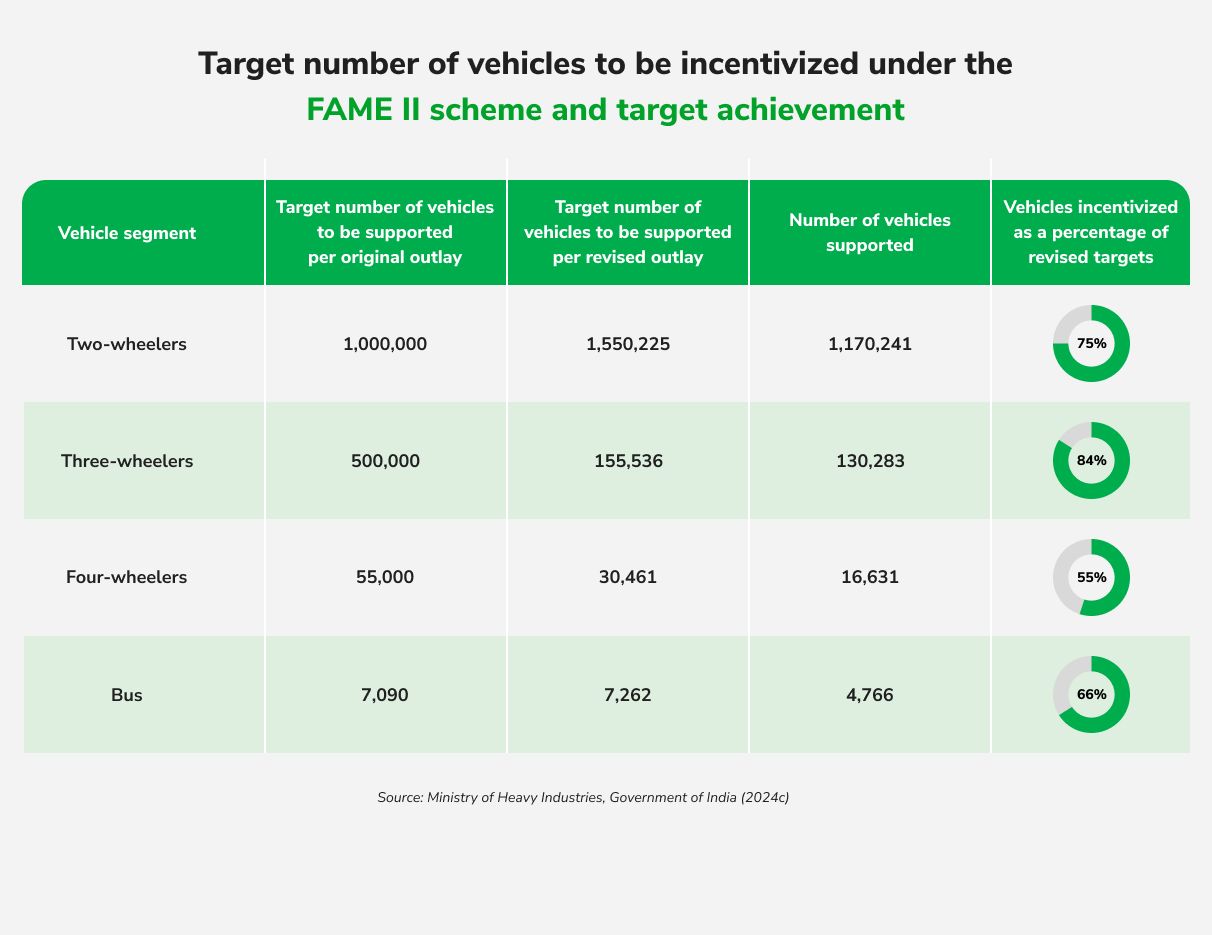
FAME II (2019–2024) significantly expanded support. With a budget of ₹10,000 crore, it offered upfront subsidies on EV purchases and allocated ₹1,000 crore for EV charging infrastructure in India. By June 2025, FAME II had supported 16.29 lakh EVs and sanctioned 9,332 public EV charging stations (EVPCS) with 8,885 already installed.
These chargers weren’t limited to big cities; the scheme extended to Tier-2 and Tier-3 cities as well. FAME II’s nationwide incentives helped accelerate the EV charging network in India, which reached over 25,000 public charging points by end-2024. However, FAME II was a time-bound scheme and concluded in 2024.
A short bridging program in 2024 was later subsumed under PM E-DRIVE. In the words of the Heavy Industries Minister, “Today is a landmark day, as we transition from the FAME scheme … to the PM E-DRIVE Scheme,” signaling continued commitment with a refreshed approach. Let’s explore what PM E-DRIVE brings to the table.
PM E-DRIVE: The New Catalyst for EV Charging
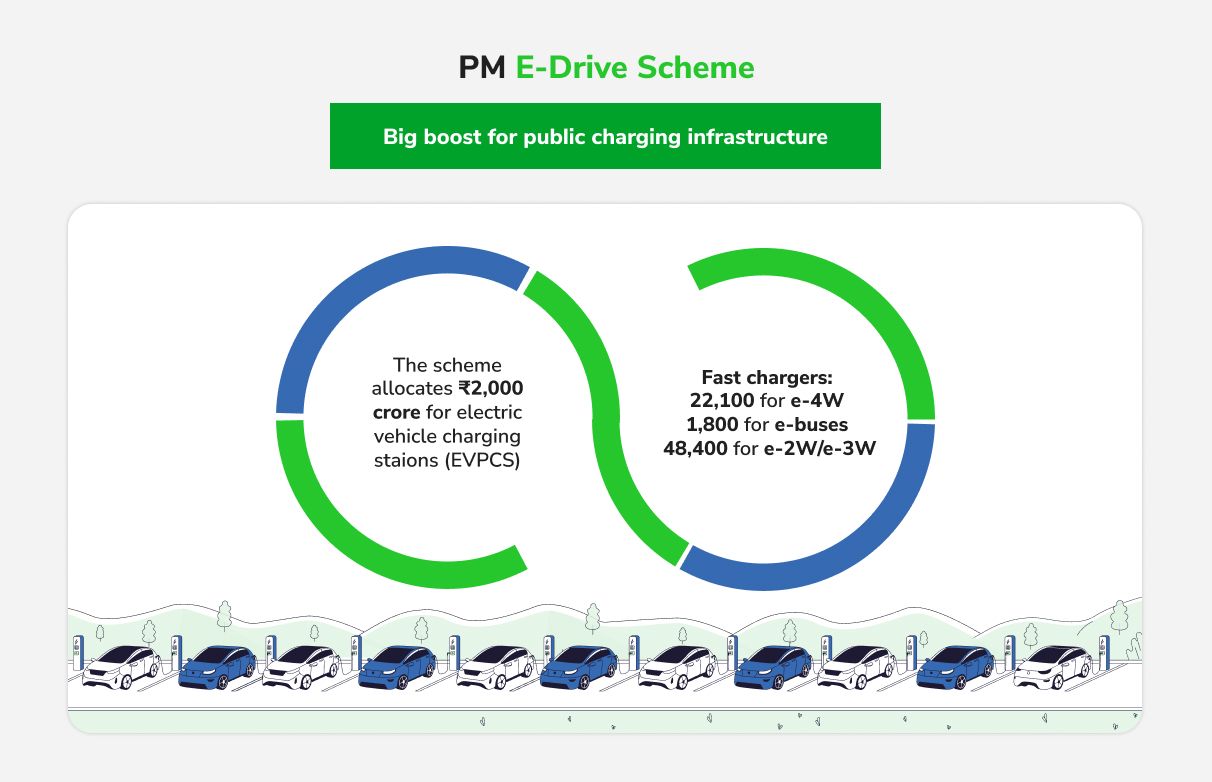
PM Electric Drive Revolution in Innovative Vehicle Enhancement (PM E-DRIVE) is India’s flagship EV incentive program, running from October 1, 2024 to March 31, 2026, with a ₹10,900 crore outlay. The scheme has two key objectives: accelerate EV adoption through buyer subsidies and establish essential EV charging infrastructure in India. In practice, PM E-DRIVE has multiple components:
- Demand incentives for EVs: A ₹3,679 crore is allocated for subsidies on electric two-wheelers, three-wheelers, buses, ambulances, and trucks, targeting nearly 25 lakh new EVs. Notably, privately owned e-2Ws are also eligible, unlike the earlier focus on commercial/public vehicles. E-vouchers linked to Aadhaar are used, enabling seamless incentive claims at purchase.
- Grants for charging infrastructure: A ₹2,000 crore is earmarked to expand public EV charging stations nationwide. This funding will support installing approximately 72,000 new chargers by FY 2025-26. The plan includes around 22,100 fast chargers for cars, 1,800 charging stations for e-buses, and 48,400 chargers for e-two & three-wheelers, focused on high-demand cities and key highway corridors. For context, FAME II supported approx. 9,300 chargers in five years, while PM E-DRIVE targets over 70,000 in just two years. Chargers will be strategically placed on 50 national highway corridors and high-footfall public locations such as metro stations, airports, bus depots and fuel stations to curb range anxiety.
Other components of PM E-DRIVE include support for electric buses, ambulances, and testing labs, but the scheme’s most transformative impact lies in its EV charging infrastructure in India push.
In May 2025, an inter-ministerial meeting chaired by MHI decided to appoint BHEL as the nodal agency to aggregate charger demand and develop a unified “EV super app” for users. This app will allow real-time charger discovery, slot booking, digital payments, and track rollout progress,enhancing the user experience and transparency.
Such coordination reflects a “whole-of-government” approach: “Ministries, public sector enterprises, and states are all aligned to deliver results on the ground… PM E-DRIVE will catalyse new industries, generate green jobs, and offer seamless electric mobility to every Indian,” said the Heavy Industries Minister.
Overall, PM E-DRIVE is set to be a transformative initiative. It consolidates India’s EV momentum into a focused two-year rollout, backed by substantial funding. By making EV charging stations widely accessible, the scheme aims to eliminate one of the biggest hurdles to EV adoption.
Union Budget 2025: Supercharging the EV Ecosystem
The Union Budget 2025-26, delivered in February 2025, reinforced India’s commitment to electrified transport, particularly via funding and tax reforms. Finance Minister Nirmala Sitharaman almost doubled the overall automotive sector budget, from ₹4,307 crore in FY24 to ₹7,485 crore in FY25, driven largely by increased EV spending. A major highlight was the boost to charging infrastructure:
- Higher Allocation for PM E-DRIVE: The budget allocation for the PM E-DRIVE scheme jumped by 114% to ₹4,000 crore for FY2025, specifically to accelerate the rollout of charging stations. The government is front-loading funds to ensure the targeted 72,000 chargers under PM E-DRIVE are deployed on schedule. This infusion also signals to private players. Complementing this, a dedicated PM e-Bus program was allotted ₹510 crore to help electrify public transport in cities.
- To reduce EV costs and boost domestic manufacturing, Budget 2025 announced customs duty exemptions on critical battery inputs like cobalt, lithium-ion waste, and nickel compounds. The Production-Linked Incentives (PLI) scheme for EV components saw a 713% budget increase, and a ₹10,000 crore National Clean Tech Mission was launched to support battery and solar panel production.
- The budget also continued the policy of offering income tax rebates on loans for EV purchases (Section 80EEB) and announced improved access to credit. Additionally, it expanded the Fund of Funds for Startups, which EV charging startups can access for capital. While these are not direct charging infrastructure subsidies, they improve the overall environment for EV adoption, innovation, and growth of the EV charging network in India.
- Recognizing that a charging station network needs reliable and affordable power, the budget speech hinted at power tariff reforms and urged states to support EV tariffs. Though details were scant, the central government’s encouragement in this area is important for reducing charging costs.
State EV Policies: Incentives Driving Infrastructure on the Ground
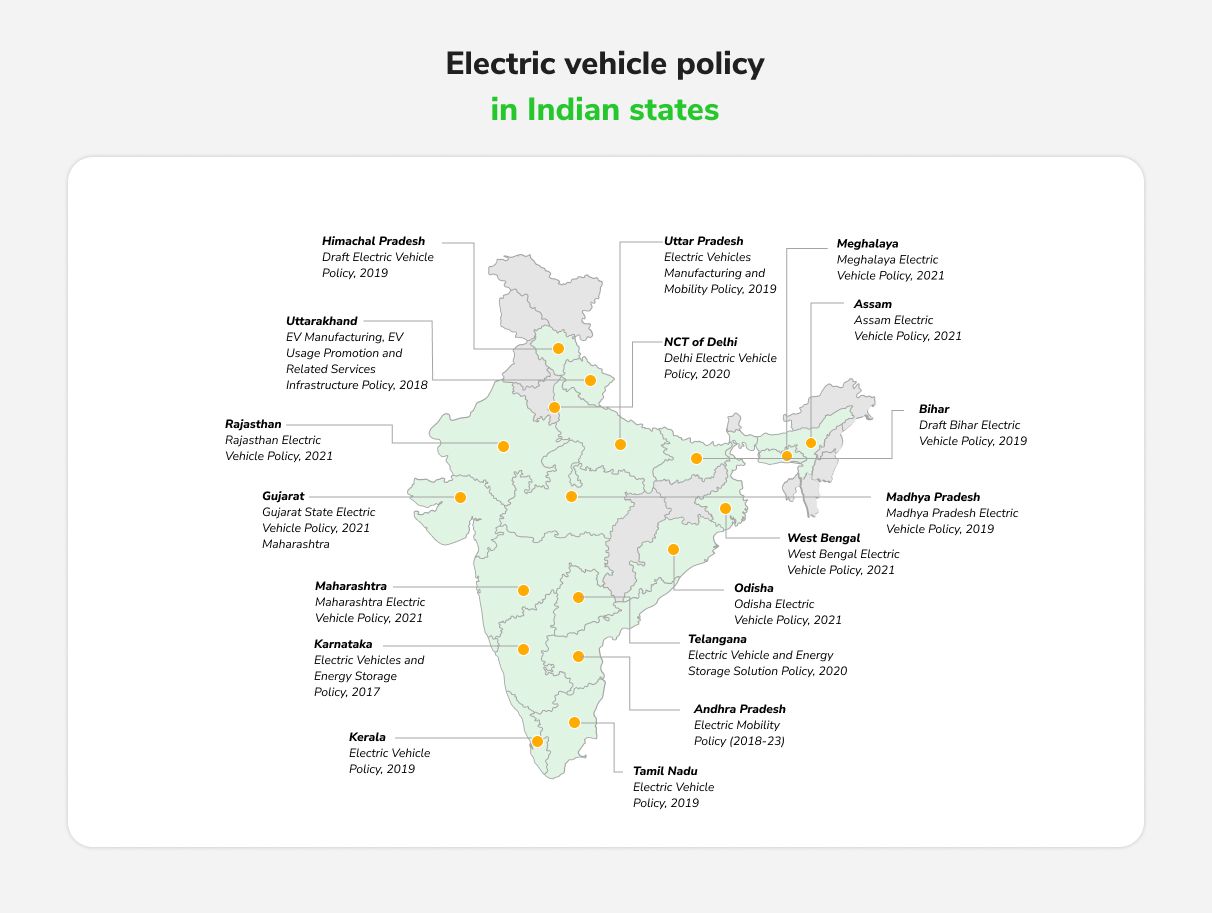
India’s states are playing a pivotal role in India’s EV revolution. Over 25 states and Union Territories have notified dedicated EV policies, offering a mix of capital subsidies, land support, and electricity concessions.
Capital Subsidies for Charging Stations
- Maharashtra: The new Maharashtra EV Policy 2025 has introduced a Viability Gap Funding (VGF) scheme for public chargers. CPOs can get 15% of the charger cost reimbursed (up to ₹10 lakh per DC fast charger), especially along highways and in cities like Mumbai and Pune.
- Delhi: Offers a 100% subsidy up to ₹6,000 per charging point, for the first 30,000 slow/medium chargers, installed at homes, apartments and shops. A single-window system with empaneled vendors simplifies installation these chargers, making it hassle-free. By mid-2023, Delhi had enabled over 1,000 charging points through this program. While the per-unit subsidy is small, the sheer volume (30k chargers) creates a dense network. For larger public charging stations, Delhi offers other benefits like land allotment in public parking lots and reduced power tariffs (more on that shortly).
- Other states such as Gujarat, Kerala, Punjab, Tamil Nadu, and several Northeastern regions offer similar capital subsidies, typically ranging from 20–25%, with caps per charger or station. Land Allotment and Infrastructure Support
Securing suitable land remains a key challenge for harging infrastructure. States are addressing this through:
- Land at Concessional Rates: States with EV manufacturing ambitions are developing EV parks or clusters where land is offered at subsidized rates for related infrastructure. Tamil Nadu’s 2023 EV policy gives 50% discounted land in EV supplier parks for companies setting up EV or charging equipment plants. While that mainly targets factories, it indirectly helps charging by bringing down charger hardware costs. Telangana’s updated policy (Nov 2024) similarly offers land in upcoming EV parks on long-term lease at concessional rates to attract charging station operators and battery swapping providers.
- Public Land for Charging Stations: Several states and city authorities are identifying government-owned spaces (bus depots, parking lots, highways rest areas) to install charging stations. Delhi has been aggressive here – through its single-window portal, applicants can request installation at municipal parking lots and Delhi Transco Ltd helps provide locations and connections. Maharashtra is opening up MSRTC bus depots for private players to install fast chargers (with revenue-sharing models). Karnataka is clustering chargers at metro stations and BMTC bus depots in Bengaluru, often offering space at nominal rent. This addresses both location and footfall challenges, while the state bodies often facilitate the electrical connection as well.
- Ease of Land Conversion & Approvals: States are simplifying the red tape for charging stations. Many have declared charging setups as a permissible activity in commercial or non-agricultural land use, avoiding lengthy land-use change processes. Some (e.g., Rajasthan and Madhya Pradesh) have single-window clearance systems to approve new charging stations within weeks, coordinating utilities and urban bodies.
- EV Parks & Hubs: A few large states are creating integrated EV zones. Uttar Pradesh is setting up a 500-acre EV park near Kanpur, primarily for manufacturing, but with provisions for battery swapping and charging infrastructure on-site. The idea is to provide ready-made infrastructure (power supply, land, permissions) so investors can plug-and-play.
Affordable Electricity: Tariff Concessions and Duty Waivers
Electricity cost is the single largest ongoing expense for a charging station operator. To make EV charging profitable and accessible, states:
- Dedicated EV Tariffs: Most states offer dedicated EV tarrifs with lower per-unit rates and reduced demand charges compared to commercial tariffs. For example, Delhi’s EV tariff is ₹4.5 per kWh (plus nominal fixed charges), which is significantly cheaper than regular commercial rates. Maharashtra too has a concessional EV tariff (around ₹5–5.5/kWh) approved by MERC, and waived demand charges for the initial years, enabling CPOs to pay only for energy consumed. Karnataka and Telangana have tariffs in the ₹5–6 range, which their policies advertise to investors as a major incentive.
- Electricity Duty Exemption: States like Gujarat and Maharashtra have waived electricity duty for EV charging operations for a period (often 5 to 10 years). Gujarat, for instance, offers a 100% electricity duty exemption for EV charging services, effectively reducing the energy cost by approx. 15%. Odisha, Bihar, Tamil Nadu, Punjab, and several others include similar duty holidays in their EV policies. This directly lowers the cost per unit of electricity for CPOs.
- Tax Cuts and Other Waivers: Some states reimburse State GST on the purchase of batteries for swapping stations. Chhattisgarh offers 100% SGST reimbursement on EV fast chargers and even on battery purchases for swap stations. Haryana and Uttarakhand exempts charging equipment from certain state taxes and reduces stamp duty for land leases on charging stations. These can be niche benefits but add up.
Together, these concessions keep EV charging cheaper than petrol, often ₹1–2 per km, and encourage adoption.
Other Incentives and Mandates
State policies also include various innovative measures to boost charging infrastructure:
Mandating Charging Facilities: States like Andhra Pradesh, Telangana, and Haryana, require new real estate projects to include EV charging provisions
Fuel Station mandates: Maharashtra, Kerala and Tamil Nadu mandate require petrol pumps to install at least one charging station.
- Highway mandates: NHAI (central) is working with states to ensure charging points every 40-60 km on national highways – many states piggyback on this to also cover state highways.
- Battery Swapping and Grid Support: Delhi, Telangana and Tamil Nadu offer incentives for battery swapping stations
- Open Access for Renewables: Some states allow open access to solar energy for large charging parks, reducing carbon footprint.
- Public Awareness and Outreach: Campaigns like Switch Delhi educates users about EVs and the available charging infrastructure.
The result of all this multi-level push is evident: India’s EV charging infrastructure is growing rapidly. By Dec 2024, we saw 25,000+ public charging stations operational across the country, up from just a few hundred five years prior.
Conclusion: A Unified Charge Toward an Electric Future
The policy landscape in 2025 clearly shows that India is fully commited to an electric mobility revolution. With central government’s initiatives like PM E-DRIVE and state-level incentives offering capital grants, land, and low-cost power, charging infrastructure is expanding rapidly.
For CPOs, fleet operators, and investors, this is the ideal time to enter the market.
Of course, challenges remain, but today the direction is clear. Executing the installation of tens of thousands of charging stations in a short span will test coordination between ministries, state agencies, and private players. There is also a need for standardized guidelines and robust maintenance to ensure these stations remain functional and don’t “rust,” as some experts caution.
Every ₹1 saved in subsidies or gained in revenue by a charging operator, every parcel of land allotted, and every reduced electricity bill is locking in “green miles” on India’s roads for decades to come. The government incentives, central and state, are not just monetary boosts; they are confidence builders, telling the ecosystem that “we are in this together.”
As a result, India’s EV charging infrastructure is no longer a chicken-and-egg dilemma; it’s racing ahead, powering the country’s transition to sustainable transportation.
The journey from a handful of chargers to a nationwide network in a few years is truly remarkable. And with the current policies in place, the remainder of this decade promises an electric ride, one charging station at a time, lighting up a cleaner future for all.




